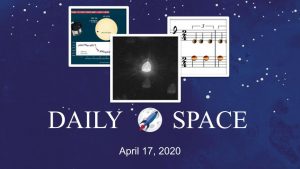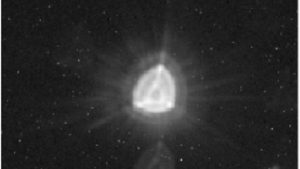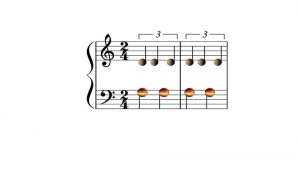
Cheops, ESA’s new exoplanet mission, will commence routine science operations by the end of April, an international team lead by researchers of the University of Geneva has discovered a six-planets system, and Pamela talks Betelgeuse with astronomer Emily Levesque.
Links
Cheops, ESA’s new exoplanet mission, has many exciting discoveries to come
- Cheops observes its first exoplanets and is ready for science (ESA)
- CHEOPS space telescope ready for scientific operation (U of Bern)
An international team lead by researchers of the University of Geneva has discovered a six-planets system
- Astronomy: six planets (almost) in rhythm (U of Geneva)
Interview with Dr. Emily Levesque from University of Washington about Betelgeuse
- Dr. Emily Levesque, Department of Astronomy, University of Washington (U of Washington)
Transcript
This is the Daily Space for today, Tuesday, April 14, 2020.
Welcome to the Daily Space, I am your host, Dr Pamela Gay, and I am here to put science in your brain. Most Mondays through Fridays either I or my co-host Annie Wilson will be here, bringing you a quick rundown of all that is new in space and astronomy.
It is Friday. I don’t know about any of you, but last night while trying to complete my timesheet, I determined Tuesday was about 10 years ago. My brain is full and ready to sleep in tomorrow, and the news was conveniently easy on the mind to help us through. Not only that, but after the news, we’re going to be joined by Dr Emily Levesques, an assistant professor at the University of Washington. She will be discussing her latest research into what may or may not have caused Betelgeuse to get so captivatingly dim in December and January.

Astronomers study stars in lots of weird ways, and one of the most surprising ways to even other astronomers is by using defocused images. Yes folks, those of us who have tried to get the best possible measurements of star brightnesses in non-crowded fields will actually unfocus the star light so it spreads out over more pixels. I’ve done this with RR Lyae variable stars using wide field cameras, Adam Reiss has done this with the Hubble Space Telescope and and Cepheid variables… and now the CHEOPS mission does it with everything it looks at as it searches the sky for planets orbiting stars. A few weeks ago, we showed you this early commissioning image of a star without planers. Today, we are happy to share that CHEOPS has observed the star HD 92296 – a star known to be orbited by the planet Kelt-11b – and have observed the transit with a new level of resolution that will allow us to more accurately measure the size of planets and to see smaller worlds than we have been previously been able to see.

Cheops uses the planetary transit method to see where planets are located – this is the same technique used by Kepler and many other telescopes. As a planet passes in front of its home star, it blocks more and more of the star’s light until it is completely in front of the star. The time the planet takes to go from just taking a tiny bite out of its star’s light to being fully in front of the star’s disk will vary based on how big the star is and how far it is from its Star. By being able to accurately measure the light curve going from nothing by Star, to Star with a planet in front, we will be able to better understand what factors go into planets being dense little super Earths, versus bloated out ice giants…. And it will do a lot of other things.. But that is the research I’m most anxious to see.
While Cheops is still in the check out phase, everything is looking good, and the mission team hopes to transition into routine science operations at the end of the month. It is my hope that the next time I mention the mission, it will be to bring you news of fabulous advances in our understanding of known worlds and discoveries of new worlds.
In every scientist’s life, there are discoveries that radically change how we view our universe. I still don’t know what the biggest discovery of my life will be, but I’m hoping that when I’m an old and crotchety scientist, I’ll be joking about that 30 year mistake of thinking the universe was Dark Energy dominated, and taking joy in a lifetime of seeing our understanding of solar systems grow and grow as we find the orbiting alien stars, and as we explore our local worlds with an ever expanding fleet of robot collaborators.
We have gone from discovery of planets being 1 exciting world at a time to instead being small flocks of worlds found on a regular basis.

Using the ground based SOPHIE spectrograph, astronomers from the Universite de Geneve have studied a 6 planet system orbiting the star HD 158259. Spectroscopes see planets by looking at how they tug around their host star with gravity. This system includes 1 super Earth and 5 mini Neptunes, tightly packed together around a fairly average star. Now, finding systems like this is no longer entirely news worthy, but this system caught scientists attention with its rhythm and jazz. The world’s in this system are almost precisely in a 3:2 ratio. The innermost planet goes around 3 times for when the next outer world goes around twice, and that world goes around 3 times for within the 3rd planet goes around twice. This continuing pattern of 3:2 isn’t perfect. It plays more like a middle school drum section than a perfectly synced professional gig. Still… it’s kind of cool… and I got to say it is partnered with one of the worst best intentions graphics of the year. In a graphic meant to show a 2 to 3 resonance, they show the planets as notes, but it isn’t really spaced right… you’ve just got to see it for yourself. It is so “just not quite right” it is fabulous. We have the graphic over on DailySpace.org
And that rounds out today’s news. Now, don’t go anywhere! In just a moment we will be joined by Dr Emily Levesque, who will be discussing Betelguese with us.
<———————>
As part of helping keep us all occupied in these really weird times, we’re going to be hosting a lot of additional content on our Twitch channel, and we want to remind you that CosmoQuest has an active community on Discord where you can talk science, volunteer for various projects, and even find other people to join you in playing some online games. You can find links to everything that is going on at CosmoQuest.org.
Thank you all for listening. Today’s script was written by Pamela Gay, and the Daily Space is produced by Susie Murph. The Daily Space is a product of the Planetary Science Institute, a 501(c)3 non profit dedicated to exploring our Solar System and beyond. We are here thanks to the generous contributions of people like you. The best way you can support us is through Patreon.com/cosmoquestx Like us? Please share us! You never know whose life you can change by adding a daily dose of science.


 We record most shows live, on Twitch. Follow us today to get alerts when we go live.
We record most shows live, on Twitch. Follow us today to get alerts when we go live.